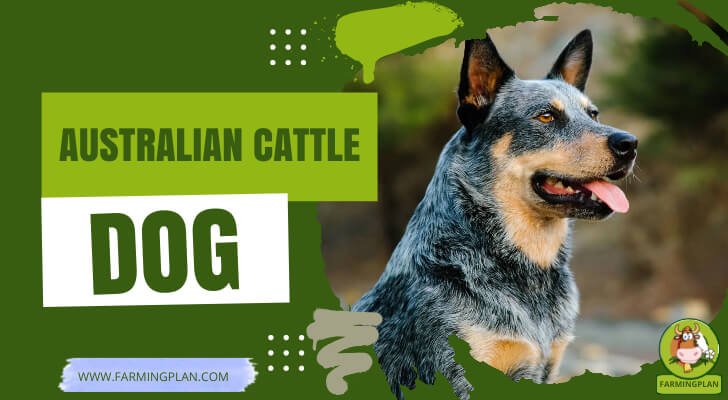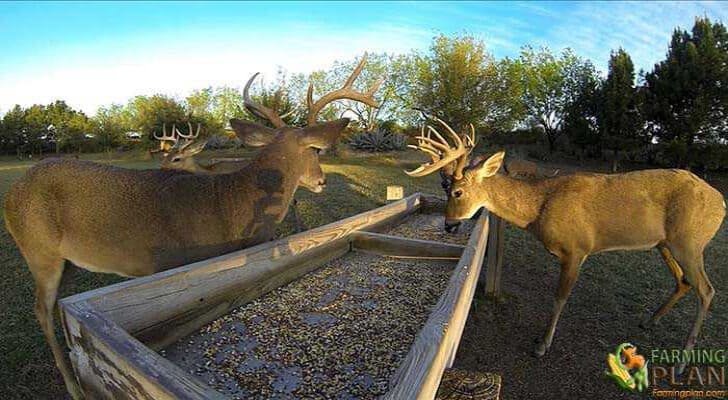Are you considering raising Australian Cattle Dogs? If so, you’ve come to the right place! With its intelligence, strength, and loyal nature, ranching with a Cattle Dog can be an incredibly rewarding experience for both owner and dog. Whether you’ve got your first pup or are just exploring the breed as a potential business venture, this article will help guide you in all things related to Australian Cattle Dog farming—from basic care essentials to skill-building tips. So gather up the family (or your future four-legged herding team) and get ready to learn what is required to be a responsible cattle dog owner.

History & Origin Of Australian Cattle Dog
The Australian Cattle Dog, also known as the Blue Heeler or Queensland Heeler, is a beloved breed of dog originating in Australia. Originally bred for their herding abilities, these dogs are known for their intelligence, loyalty, and high energy levels. They were developed by crossing Dingoes with various breeds of European herding dogs, resulting in a unique and adaptable breed. Today, Australian Cattle Dogs are popular pets and have also been trained for various jobs such as search and rescue, agility, and obedience competitions. Their striking blue coat and unyielding work ethic have made them a favorite among farmers and ranchers alike. This breed’s fascinating history and origin make them a fascinating subject for dog enthusiasts and lovers of Australian culture.
Characteristics
Known for their high energy and strong work ethic, the Australian Cattle Dog is a unique breed that has become increasingly popular among dog enthusiasts. These dogs were originally bred for herding cattle, but they have since become versatile working dogs that excel in agility, obedience, and search and rescue. What sets the Australian Cattle Dog apart from other breeds is their impressive intelligence and trainability. They are quick learners who thrive on positive reinforcement and consistent training. However, because of their high energy levels and need for mental stimulation, they may not be the best fit for every household. Overall, the Australian Cattle Dog is a dynamic and loyal companion that requires plenty of attention and exercise, but for those willing to put in the time and effort, they make excellent pets.
Feed
Keeping an Australian Cattle Dog healthy and happy requires a proper diet that caters to their active lifestyle. As energetic and intelligent working dogs, they need a nutrient-rich diet that will provide them with enough energy to keep up with their herd. Protein is a key ingredient in their diet, as it supports their muscle development and maintains a strong and healthy body. It is also essential to provide them with carbohydrates, which serve as their primary source of energy. Vitamins and minerals are also necessary for their overall wellbeing, as they help maintain their immune system and overall health. In short, feeding an Australian Cattle Dog requires careful consideration and selection of high-quality and nutritious dog food that meets their unique dietary needs.
Usage
The Australian Cattle Dog, often referred to as the “heeler,” is a highly versatile breed renowned for its agility, intelligence, and unwavering loyalty. Originally bred in the Australian outback to herd cattle over long distances, this breed has become a popular choice for several working roles such as search and rescue, security, and even as a companion animal. With a unique blue or red speckled coat and a muscular build, the Australian Cattle Dog is a striking breed that stands out in any crowd. Owners have to keep in mind that this breed has a high energy level and must be kept active and engaged to keep them happy. Overall, the Australian Cattle Dog is an exceptional breed for those looking for a loyal, active companion that can take on various tasks.
Special Feature
The Australian Cattle Dog, also known as the Blue Heeler or Queensland Heeler, is a hard-working and intelligent breed that was specifically developed for herding cattle in the harsh Australian outback. Their unique appearance, with speckled blue or red coats and alert pointy ears, sets them apart from other breeds. But it’s their tireless energy and unwavering loyalty that make them beloved companions for those who lead active lifestyles. Known for their ability to run for hours on end, these dogs require plenty of physical exercise and mental stimulation to keep them happy and healthy. If you’re looking for a four-legged companion that’s up for adventure and always by your side, the Australian Cattle Dog might just be the perfect match.
Understanding the Basics
Cattle dog farming is a unique and fascinating way of life that requires a deep understanding of canine behavior and a knack for handling livestock. These hardworking dogs are bred and trained to assist farmers in managing their herds, and they play an essential role in keeping the operation running smoothly. Owning a cattle dog can be both rewarding and challenging, but with proper training and care, these intelligent and devoted animals can become valuable members of any farm team. If you’re considering adding a cattle dog to your farming operation, it’s essential to understand the basics of their behavior and training to ensure a successful partnership with your four-legged friend.
Choosing a Healthy
Choosing a healthy puppy to start your herd can be a daunting task. However, it is essential to thoroughly evaluate the puppy’s health status, temperament, and breed characteristics to ensure a strong foundation for your herd. A healthy puppy should have bright, clear eyes, good color and moisture in their nose, clean and odorless ears, and a smooth coat with no bald patches or skin irritations. Additionally, observe the puppy’s energy level and ensure they are playful, curious, and not lethargic. Temperament is also vital, as you want a puppy that is confident, friendly, and obedient. Finally, research the breed characteristics and ensure they align with your needs and goals for your herd. With careful consideration and research, choosing a healthy puppy can set your herd up for success for years to come.
Setting Up an Environment
Cattle dog farming requires a specific environment in order to be successful. When setting up this environment, it’s important to consider several factors such as pasture size, shelter availability, and water source. Cattle dogs need plenty of space to roam and run, so having a large pasture is key. This not only allows them to exercise and explore but also makes it easier for you to manage and track their movements. Shelter is also important to protect them from the elements, whether it’s extreme heat or cold. Lastly, a reliable source of water is essential for their health and well-being. By creating an environment with these factors in mind, you’re setting both yourself and your cattle dogs up for success.
Properly Caring
Dogs are more than just pets; they’re part of our family. As responsible dog owners, it’s our responsibility to provide our furry companions with the proper care and training they need. Regular visits to the vet, nutritious food, and exercise are just a few things that contribute to keeping dogs healthy. When it comes to training, consistency and patience are key. Start with basic commands such as sit or stay and gradually increase the difficulty. Positive reinforcement, like treats or verbal praise, will encourage good behavior. Remember, investing time and effort in your dog’s well-being will not only benefit them, but it will also strengthen the bond you share with your loyal companion.
Benefits
When it comes to owning a dog, Australian Cattle Dogs are a breed that should definitely make it to your list. These dogs are loyal, intelligent, and highly versatile which makes them excellent companions for both indoor and outdoor activities. With their excellent herding and watchdog abilities, they make great protectors for you and your property. They are also highly trainable and can learn to perform a wide range of tasks such as hunting, agility, and obedience. A major benefit of owning an Australian Cattle Dog is their longevity. They have a lifespan of up to 15 years, which gives you ample time to bond with your furry friend. Owning an Australian Cattle Dog is a great way to add joy and companionship to your life.
FAQ
Is an Australian Cattle Dog a good family dog?
Yes, an Australian Cattle Dog (ACD) can be a great addition to any family. They are loyal, affectionate dogs with strong herding instincts that make them perfect guardians and watchdogs.
Do Australian cattle dogs bark a lot?
Well, this is an interesting question. The answer to whether or not Australian Cattle Dogs bark a lot depends on their individual personality and breed traits. Generally speaking, these dogs are quite vocal and use a variety of barks that range from steady and persistent to short bursts.
Are Australian cattle dogs difficult?
Australian Cattle Dog (ACDs) can be both highly intelligent and relatively challenging to live with. Whether an ACD is difficult or not depends largely on the individual dog, its upbringing, and the level of care taken by its owner.
Conclusion
The Australian Cattle Dog is a unique breed that makes for a superb choice for those looking to own a herding dog. Its strength, intelligence, and general personality make it an ideal choice for both experienced cattle farmers and those just beginning their amazing voyage into the world of animal husbandry. The Australian Cattle Dog combines the best of its heritage with modern sentiments – offering an economic approach to farming with agility, speed, and capability in one strong-hearted package. Choosing the right puppy as well as setting up an environment suitable to his or her needs takes patience, care and dedication – but in return you can be sure that your herd will be blessed with this four-legged friend’s loyalty, brightness, and trainability. All in all, Australian Cattle Dogs are sure to bring highly desirable traits to any farm – truly a timeless companion fit for today’s modern ranching lifestyle!


